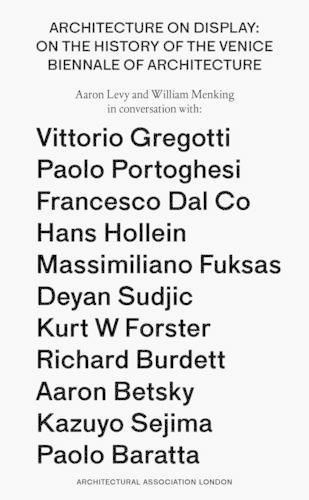Readings Newsletter
Become a Readings Member to make your shopping experience even easier.
Sign in or sign up for free!
You’re not far away from qualifying for FREE standard shipping within Australia
You’ve qualified for FREE standard shipping within Australia
The cart is loading…






The origins of the architecture biennale are generally traced to the 1970s, when it emerged from under the umbrella of the larger Venice Biennale, which was itself established in 1895. Since then it has become one of the most prestigious forums for architectural discourse today, and has served as a model for a range of international exhibitions. The book explores the biennale through the directors who established its particular discourse, including Vittorio Gregotti, Paolo Portoghesi, Francesco Dal Co, Kurt W Forster, Massimiliano Fuksas, Hans Hollein, Richard Burdett, Deyan Sudjic, Aaron Betsky and Kazuyo Sejima, as well as the current president of the Venice Biennale, Paolo Barrata. These conversations do not seek to recapitulate the exhibitions themselves but rather explore the questions that these exhibitions raise, with the hope of offering a model for future curatorial endeavours.
$9.00 standard shipping within Australia
FREE standard shipping within Australia for orders over $100.00
Express & International shipping calculated at checkout
The origins of the architecture biennale are generally traced to the 1970s, when it emerged from under the umbrella of the larger Venice Biennale, which was itself established in 1895. Since then it has become one of the most prestigious forums for architectural discourse today, and has served as a model for a range of international exhibitions. The book explores the biennale through the directors who established its particular discourse, including Vittorio Gregotti, Paolo Portoghesi, Francesco Dal Co, Kurt W Forster, Massimiliano Fuksas, Hans Hollein, Richard Burdett, Deyan Sudjic, Aaron Betsky and Kazuyo Sejima, as well as the current president of the Venice Biennale, Paolo Barrata. These conversations do not seek to recapitulate the exhibitions themselves but rather explore the questions that these exhibitions raise, with the hope of offering a model for future curatorial endeavours.